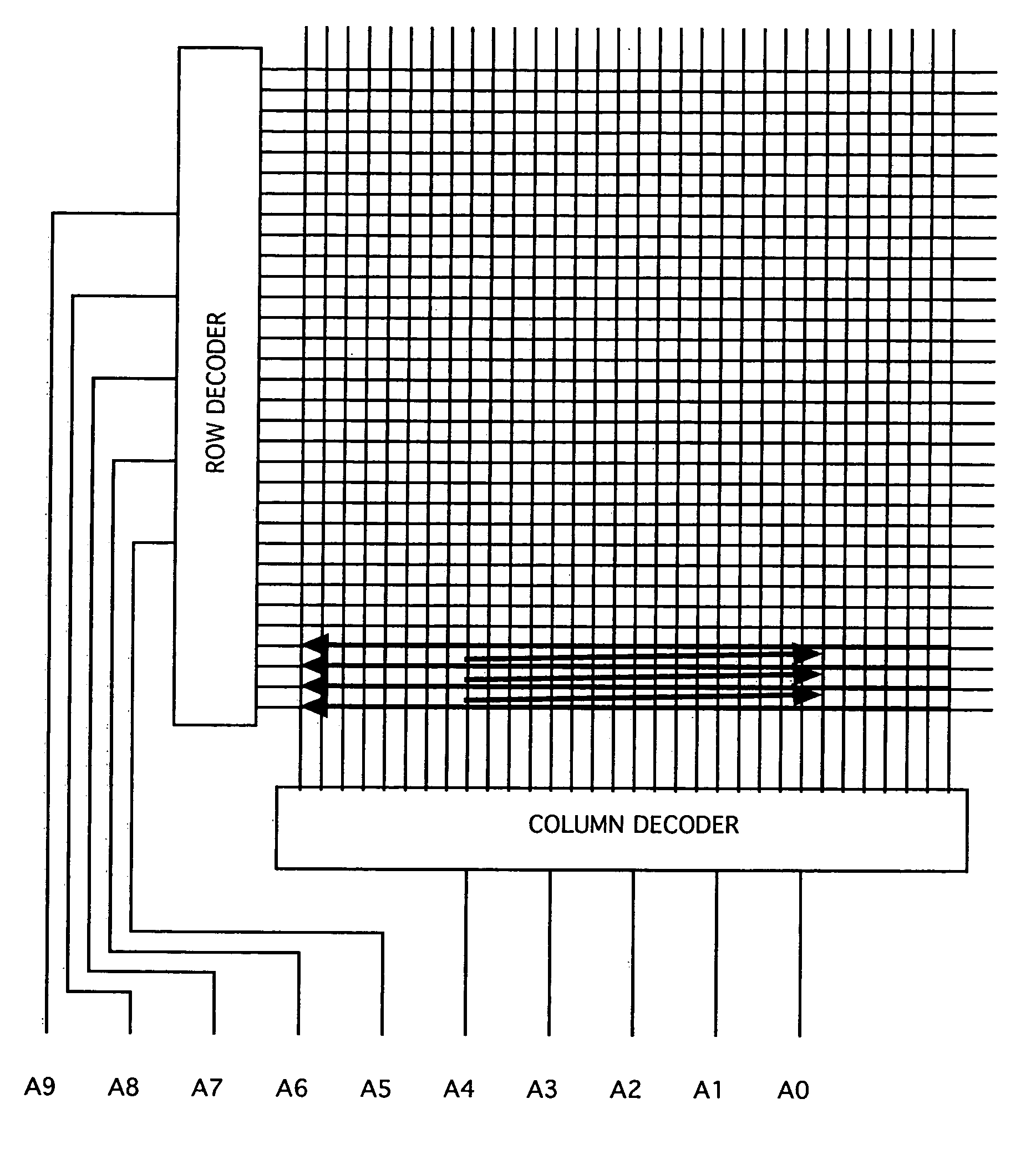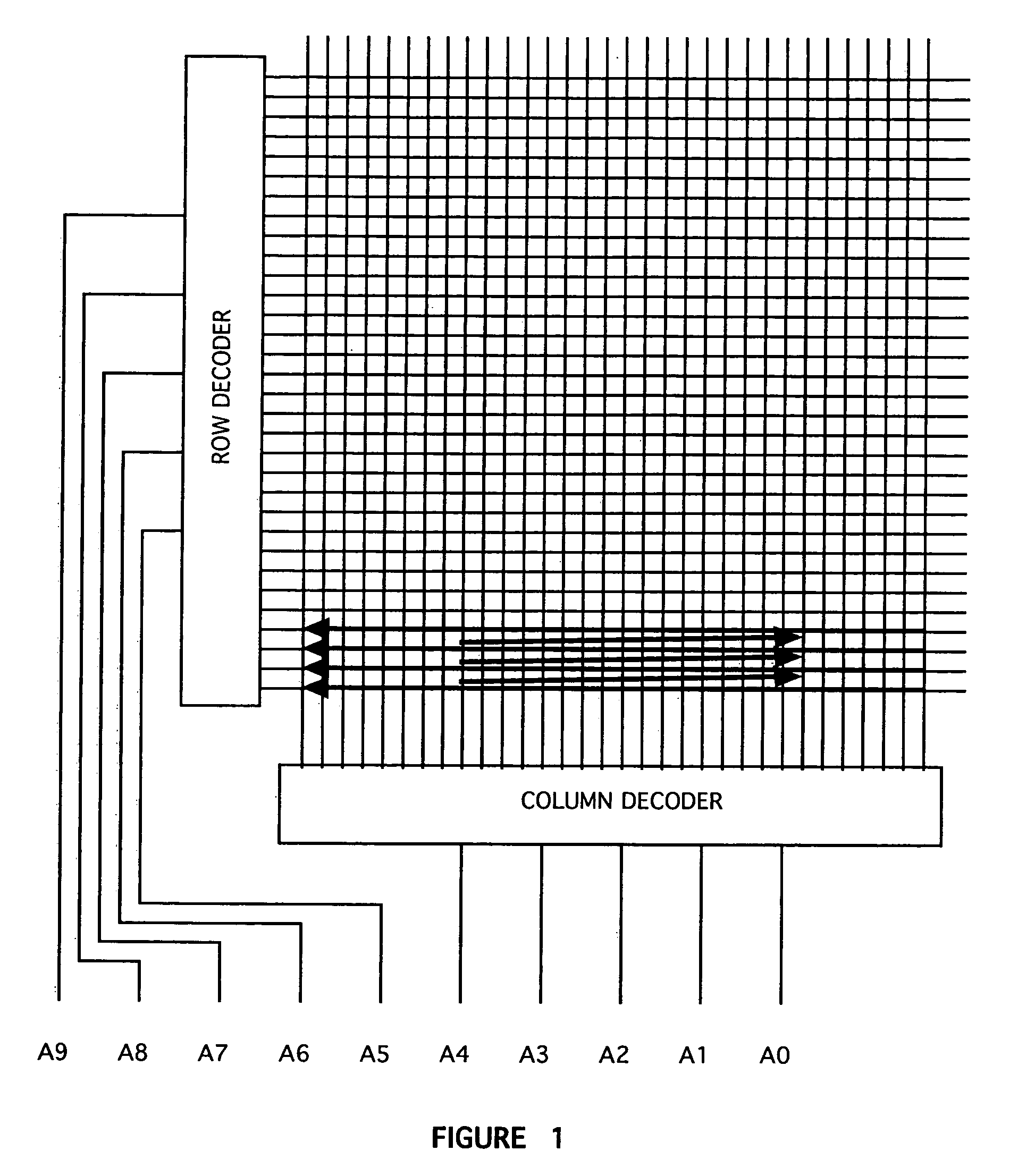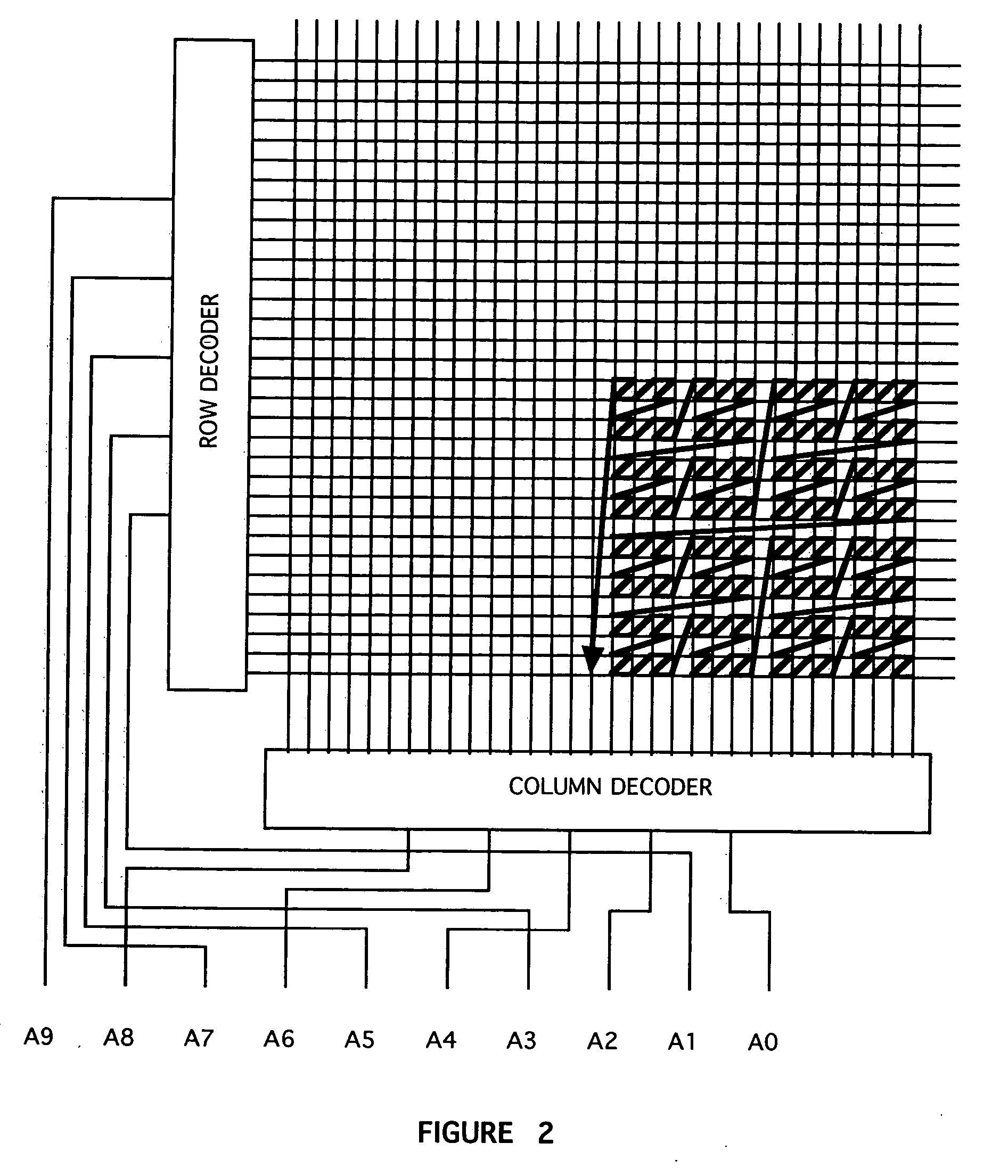Error correcting memory access means and method
a memory access and error correction technology, applied in the field of memory devices, can solve the problems of high cost per unit attributable to testing, and high cost per unit of testing, so as to reduce the cost of device testing and thereby the cost of the device itself, and efficiently utilize error correction. , the effect of reducing the cost of testing costs
- Summary
- Abstract
- Description
- Claims
- Application Information
AI Technical Summary
Benefits of technology
Problems solved by technology
Method used
Image
Examples
Embodiment Construction
[0015] The present invention is a means for accessing memory in a way that better facilitates error correcting within the memory device. In non-electronic storage devices such as CD-ROM and DVD, data is accessed in sectors or blocks. That is to say that the data is accessed not bit by bit or byte by byte, but rather as a block of data from which individual bits or bytes can then be read (when writing, the data bits or bytes are written to the data block which is then enhanced with error-correcting bits and the block is copied to the memory device). Included within this block of data are error-correcting bits which through an algorithm (e.g., hamming codes and other error correcting techniques as are well known to those skilled in the art) can detect the presence of erroneous data bits and can correct those error bits (up to a maximum number of correctable error bits per block as determined by the number of error correcting bits and the error correcting algorithm employed). By doing ...
PUM
 Login to View More
Login to View More Abstract
Description
Claims
Application Information
 Login to View More
Login to View More - R&D
- Intellectual Property
- Life Sciences
- Materials
- Tech Scout
- Unparalleled Data Quality
- Higher Quality Content
- 60% Fewer Hallucinations
Browse by: Latest US Patents, China's latest patents, Technical Efficacy Thesaurus, Application Domain, Technology Topic, Popular Technical Reports.
© 2025 PatSnap. All rights reserved.Legal|Privacy policy|Modern Slavery Act Transparency Statement|Sitemap|About US| Contact US: help@patsnap.com



